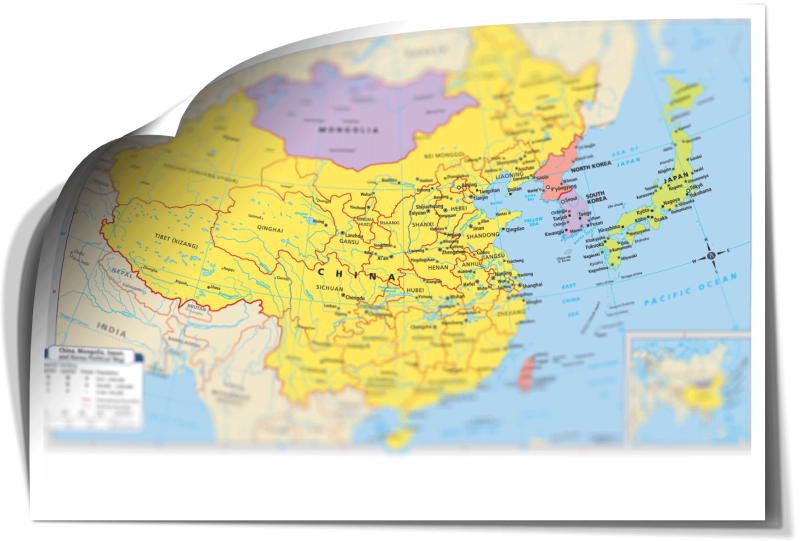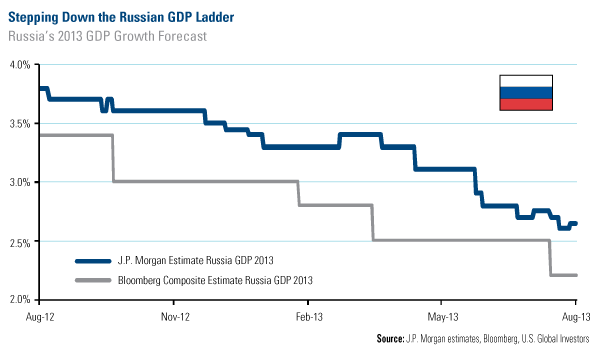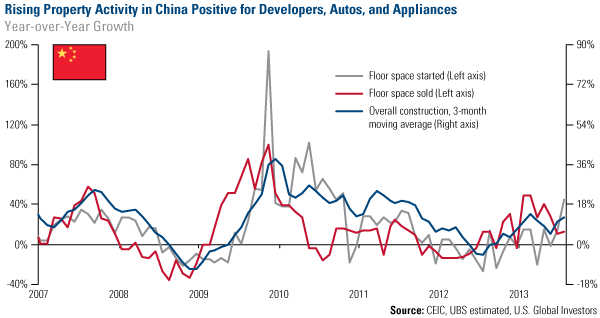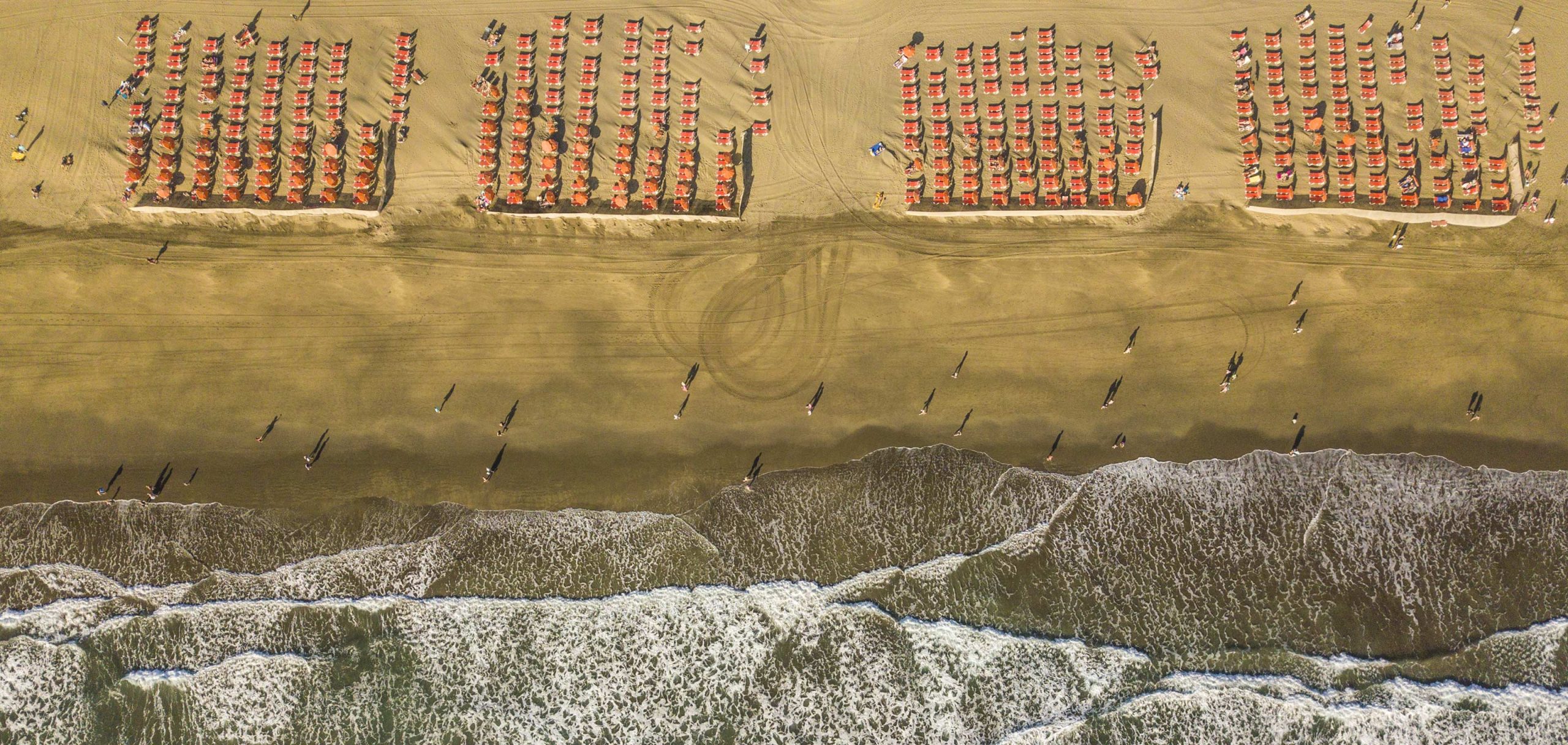Emerging Markets Radar (August 12, 2013)
Strengths
- China has once more proved the pessimists wrong, according to Vale’s CEO Murilo Ferreira. The shares of Vale, along with major rivals BHP Billiton and Rio Tinto, rallied following encouraging Chinese trade data released on Wednesday. The materials sector was the best performer across most markets this week, giving a strong boost to materials export-driven Latin American economies such as Brazil, Chile and Peru.
- Poland’s consumer credit rose 0.2 percent in the second quarter, following six quarters of contraction. The reading shows that the Polish consumer is back, adding to evidence that eastern Europe’s biggest economy is reviving. Consumer spending accounts for 60 percent of the country’s gross domestic product and is crucial to reviving the economy. The move comes on the back of better-than-expected retail sales and industrial output in June, while unemployment fell to the lowest level since November.
- China’s consumer price index (CPI) was up 2.7 percent for July, lower than the consensus of 2.8 percent, and remained flat over June’s reading of 2.7 percent. The tamed CPI print was helped by lower vegetable prices and moderating food prices. The country’s producer price index (PPI) was down 2.3 percent, a little higher than the consensus of -2.1 percent, but up from -2.7 percent in June. China’s loosening policy began towards the end of June and should continue to help improve PPI if demand for mid-stream products picks up. China’s fixed-asset investment jumped 20.1 percent year-to-date in July, which was in line with the estimate of 20 percent. Retail sales rose 13.2 percent versus the market expectation of 13.5 percent. Lastly, industrial production for July rose 9.7 percent versus the market expectation of 8.9 percent, indicating stabilized industrial activities.
- During the post-market on Friday in China, the People’s Bank of China (PBOC) released new local currency bank loans for July to be Rmb 700 billion; this is versus the market expectation of Rmb 638 billion and Rmb 861 billion in June. China’s broad money supply (M2) increased 14.5 percent versus the consensus of 13.8 percent and 14 percent in June. This reading is sequentially stable and demonstrates that monetary policy is shifting to a more neutral bias. In July, the PBOC conducted three reverse repo operations in order to inject around $10 billion into the market. China’s total social financing (TSF) stood at Rmb 808.8 billion in July, lower than Rmb 1.04 trillion in June. The lower TSF reading could be due to banks’ efforts in balance sheet deleveraging for wealth management products (WMPs).
- July exports in China rose 5.1 percent, versus the market consensus of 2.0 percent. Imports climbed 10.9 percent, versus the market consensus of a 1 percent rise. In particular, exports to Europe rose 2.8 percent, indicating a recovering economy.
- The Chinese city of Wenzhou loosened real-estate curbs by allowing second home purchases, the National Business Daily reports. Additionally, in the property sector, three A-share developers in China have been allowed to file for share placement in order to raise capital. This is a significant policy shift since developers were banned from raising money in the stock market, or from borrowing from banks in the last three years following China’s tightening in the market. This could also indicate that shadow banking as a source of financing for developers is being reduced to deleverage banks’ balance sheets in wealth management products. In regards to this policy shift towards the banking industry, the government may allow banks to sell loans to securities firms who will bundle them into asset-backed securities, China Securities Journal reports.
- China’s passenger vehicle sales for July increased by 14 percent and rose 17 percent year-to-date for the period of January to July 2013.
Weaknesses
- There has been more negative news for the Russian macro-environment. The trend of negative revisions to the 2013 Russian gross domestic product (GDP) reading, which is visible in the chart below, is likely to extend. Early activity indicators show the macro outlook getting worse. GDP expanded 1.2 percent in the second quarter from a year earlier, placing the reading below all nineteen forecasts in a Bloomberg survey. The data suggests a 0.5 percent contraction in the quarter. The unexpected slow-down in the second quarter stokes concern that the world’s biggest energy exporter may be entering a recession. Furthermore, July’s manufacturing PMI surprised negatively at 49.2 from 51.7. Business confidence, new orders, employment and capacity utilization all showed deterioration.
- The recent sell-off in the Brazilian real is hurting the bid of central bank President Alexandre Tombini to manage inflation expectations. The real has tumbled 13 percent in the past three months. This reading has frustrated the central bank’s effort to bring the annual inflation rate down below the 6.5 percent upper-limit of its target. With monetary policy moving in the right direction for inflation to slow, the question of where the currency is going to settle will continue to be the driver of inflation expectations.
- Malaysia’s June industrial production was stable, rising 3.3 percent year-over-year, but missed the market consensus of a 3.7 percent gain.
- Taiwan’s CPI reading for July was 0.08 percent after rising 0.06 percent in June, but lower than the consensus of 0.6 percent. Investors are concerned the country may be heading into a deflationary environment.
Opportunities
- The Global Composite PMI recorded a strong start to the second half of the year, rising to 54.1 in July from 51.4 in June. This was the highest reading in 16 months, according to HSBC Global Research. The notable improvements in developed markets, led by the United States’ reading of 61.2 and the reading above 50 for the eurozone, are in stark contrast with BRIC (Brazil, Russia, India and China) country data, where there was contraction. However, the expansionary readings in the developed world should bode well for increases in global trade, which should inevitably result in surging export orders across the countries in the key global supply chain. As a matter of fact, July export numbers for China rose 5.1 percent year-on-year, lending support to the aforementioned thesis.
- Mexican President Enrique Pena Nieto will delay the announcement of his proposal to end Mexico’s 70-year state energy monopoly until next week. The delay comes as political parties extend negotiations, aiming to reach the broadest consensus possible. Pena Nieto is seeking to change the constitution in order to allow foreign companies to pump crude oil in the country. To Pena Nieto’s advantage, a more aggressive proposal was submitted last week by an opposition party, improving chances of his bill being passed by Congress.
- As shown in the graph below, property sales in China remained resilient in July with a 12.4 percent increase year-over-year. New property starts surged to 45 percent in July after rising 14 percent in June, as land sales accelerated by 108 percent. Overall, property activity showed broad-based improvements, which should drive up sales of housing, auto and home appliances.
Threats
- State-backed lending in Brazil has overtaken private loans, adding pressure to the fiscal balance and prompting the country to ask the International Monetary Fund (IMF) to lower its debt calculation in the face of a downgrade threat. Government controlled banks accounted for 50.3 percent of outstanding loans in June, which has eroded the nation’s perceived creditworthiness. Brazil’s Finance Minister Guido Mantega has asked the IMF to exclude treasury debt held by the central bank from its gross debt tally. In June, Standard & Poor’s threatened to lower Brazil’s credit rating if the country’s fiscal position did not improve. Brazil’s 68.5 percent gross debt level, as measured by the IMF, overtook India’s level last year, becoming the highest reading of the BRIC group.
- Disappointment in Russia’s GDP for the second quarter should have set a stronger argument for monetary-policy easing. The central bank however, has dictated that Russian banks will face tougher rules despite being the main drivers of the economy. In Russia, consumer loans are the main source of economic growth. Nonetheless, households face a large burden of 20 percent of their income on servicing loans, according to Herman Gref, CEO and Chairman of the Board of Sberbank. Elvira Nabiullina, who took over as Russia’s central bank governor in June, is attempting to reduce banking risk by limiting borrowing, even as she seeks to bolster growth. Yet, forcing the limitation of consumer credit on banks appears counterintuitive in a situation of very low growth.
- Currently one of the top policies in China is to deleverage the economy by reducing shadow banking and to cut capacity in steel, cements, non-ferrous metals and coals. Since many over-built industrial facilities are running at losses, and therefore rely heavily on shadow banking for the repayment of interest and debts and to operate cash flow, the deleveraging could cause bankruptcies in the next 6 to 12 months.
















